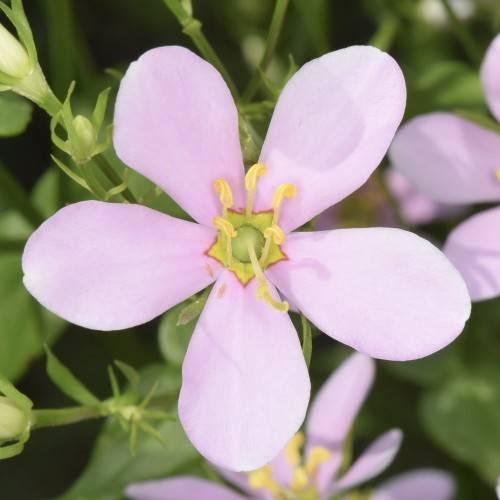
rose gentian
Sabatia angularis
Cycle:
Herbaceous Perennial
Watering:
Average
Hardiness Zone:
6 - 9
Flowers:
Flowers
Sun:
Full sun,part shade
Leaf:
Yes
Growth Rate:
Low
Maintenance:
Low
Salt Tolerant:
Yes
watering
Rose gentian (Sabatia angularis) plants should be watered consistently and deeply in order to ensure healthy growth. It is best to water in the morning so as to avoid any chance of foliage being damaged by fungal infection. The amount of water a rose gentian requires varies depending on the soil and temperature. During the growing season, water when the top inch of the soil is dry. An established rose gentian should be watered once a week during drought conditions. During the cooler months, water only when the soil becomes dry to the touch. If the soil is kept soggy or overly wet, the plant may suffer from root rot.
sunlight
Rose gentians need full sunlight to thrive. They should be in direct sunlight for 6 to 8 hours each day. They will also benefit from several hours of indirect sunlight each day. Rose gentians are native to prairies and meadows, so they should be planted in an area that receives plenty of sunlight.
pruning
Rose gentian (Sabatia angularis) is a hardy perennial plant which requires light pruning each year for optimum health and aesthetic. To keep Rose gentians healthy, vigorous and actively blooming, it is recommended to prune in the spring (March-May) just after the plants flower. Pruning should be minimal, removing only spent blooms and any damaged or overly crowded stems. It is best to avoid pruning branches of green growth in order to retain a full, dense flowering plant. Additionally, it is important to disinfect pruning tools by wiping them with rubbing alcohol or diluted bleach before each prune in order to avoid any spread of disease.
